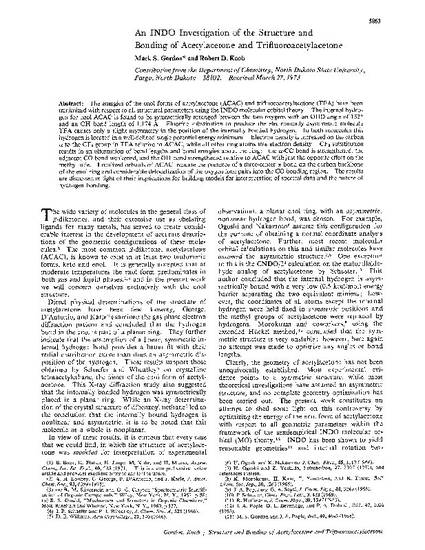
The energies of the enol forms of acetylacetone (ACAC) and trifluoroacetylacetone (TFA) have been minimized with respect to all structural parameters using the INDO molecular orbital theory. The internal hydrogen for enol ACAC is found to be symmetrically arranged between the two oxygens with an OHO angle of 152 o and an OH bond length of 1.174 A. Fluorine substitution to produce the electronically asymmetric molecule TFA causes only a slight asymmetry in the position of the internally bonded hydrogen. In both molecules this hydrogen is located in a well-defined single potential energy minimum. Electron density is increased on the carbon a to the CF 3 group in TF A relative to ACAC, while all other ring atoms lose electron density. CF 3 substitution results in an alternation of bond lengths and bond energies about the ring: the a-CC bond is strengthened, the adjacent CO bond weakened, and the OH bond strengthened relative to ACAC with just the opposite effect on the methyl side. Localized orbitals of ACAC indicate the presence of a three-center 1r bond on the carbon backbone of the enol ring and considerable delocalization of the oxygen lone pairs into the CO bonding region. The results are discussed in light of their implications for building models for interpretation of spectral data and the nature of hydrogen bonding.
Available at: http://works.bepress.com/mark_gordon/16/
